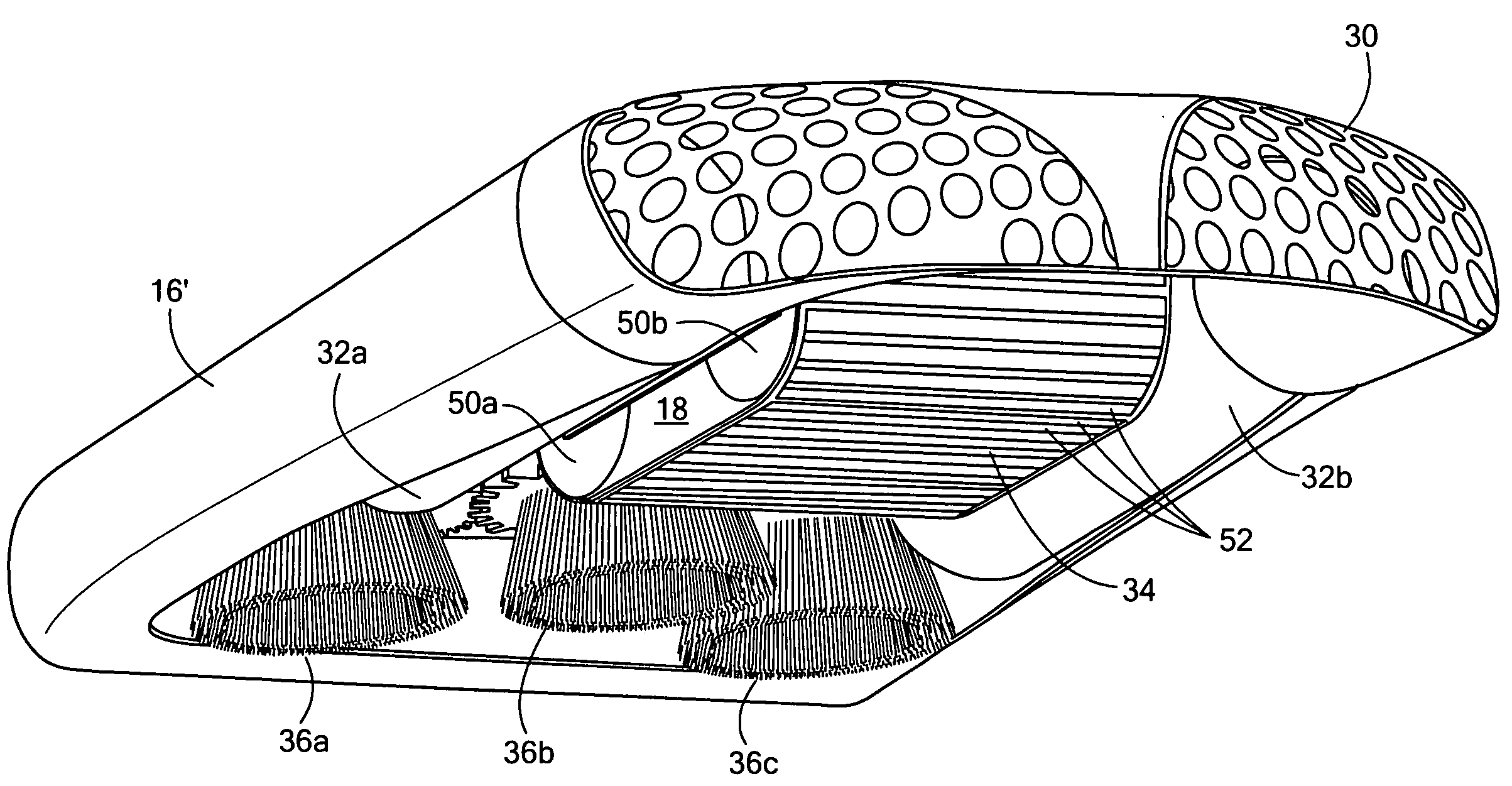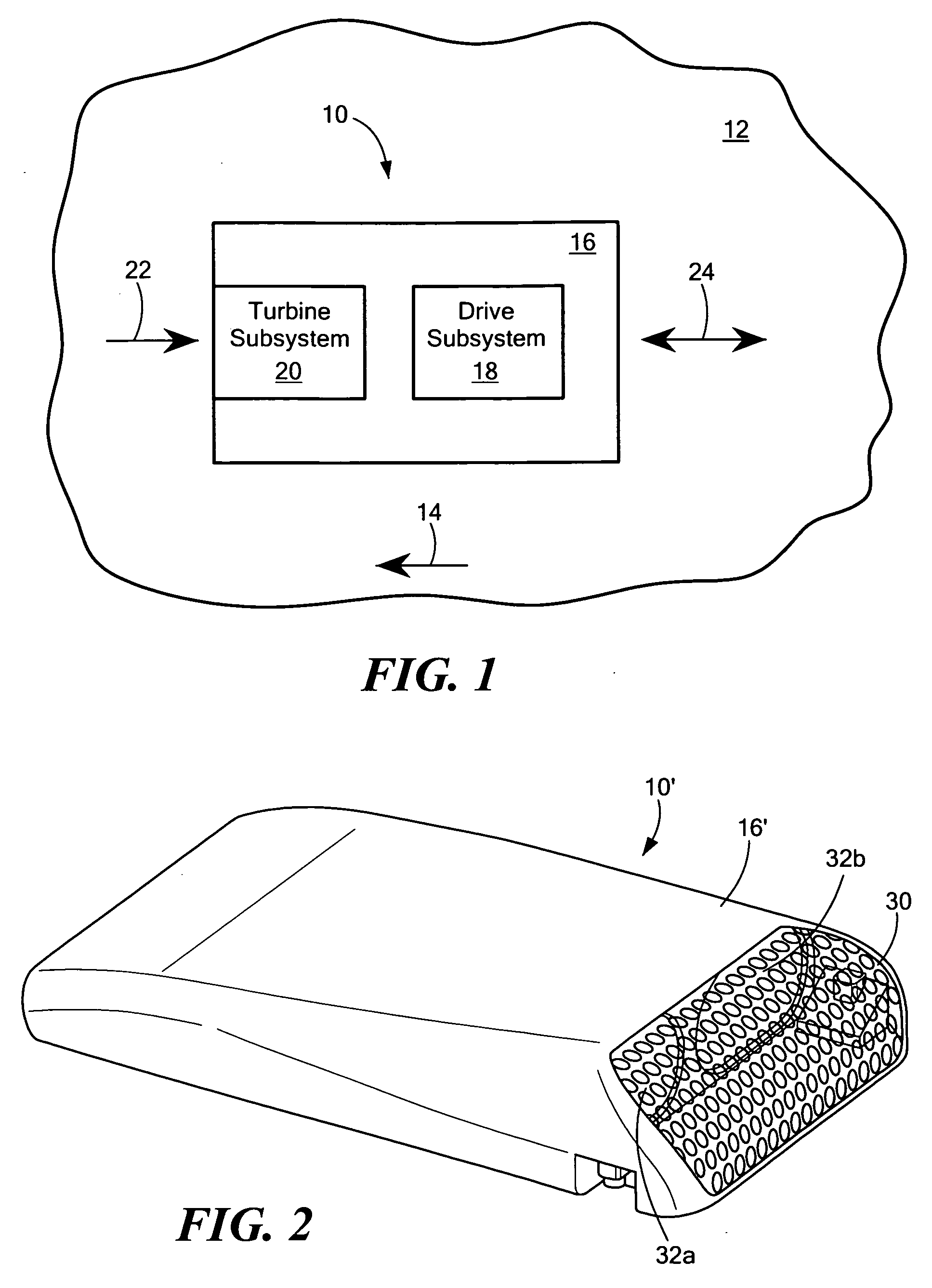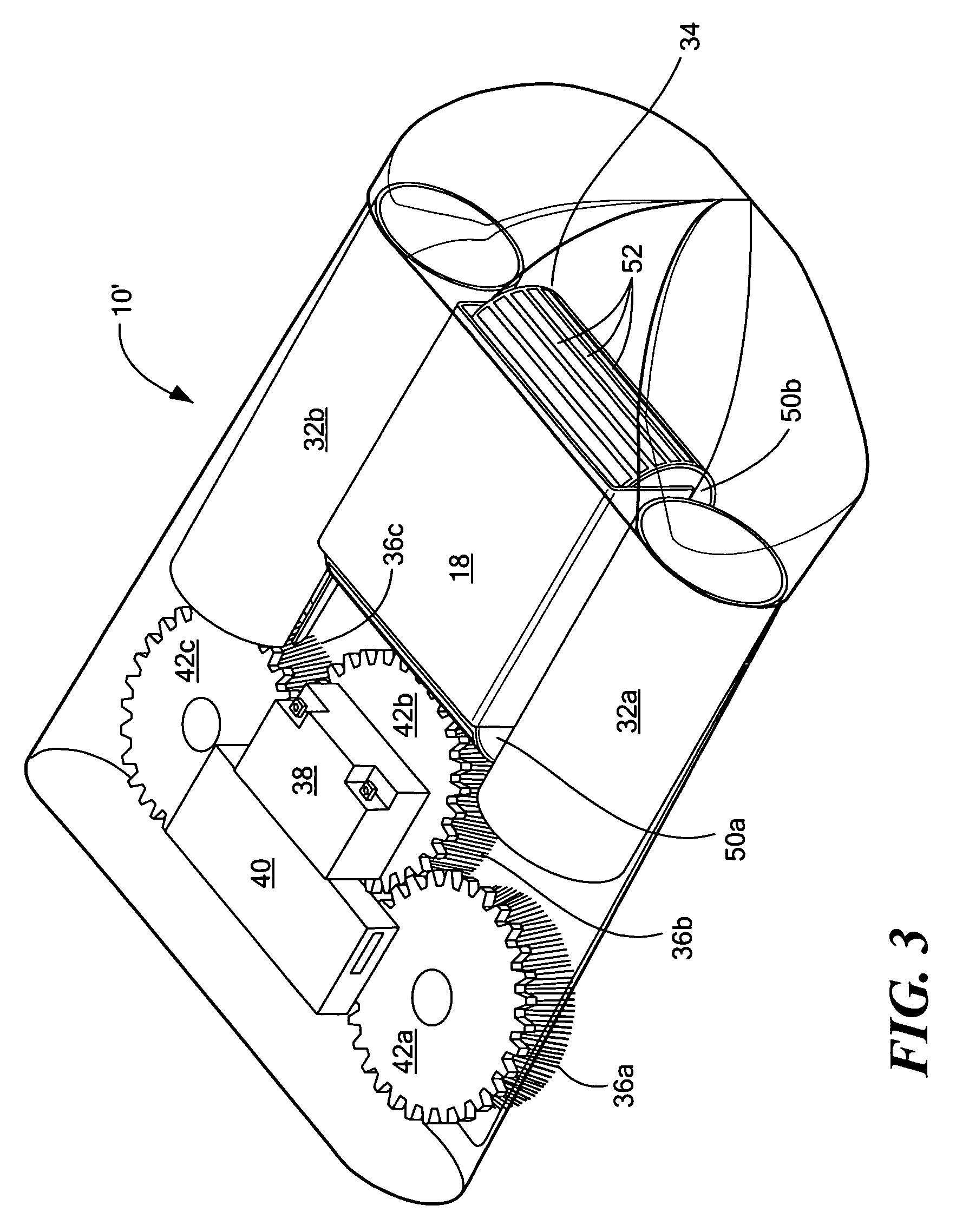Hull Robot
a robot and hull technology, applied in the field of hull robots, can solve the problems of increasing the cost of operating the vessel, increasing the emissions, and the vessel having to be dry docked for an extended period of time, so as to reduce the frictional resistance of the vessel, reduce the emission of carbon dioxide (co2), and reduce the cost of fuel
- Summary
- Abstract
- Description
- Claims
- Application Information
AI Technical Summary
Benefits of technology
Problems solved by technology
Method used
Image
Examples
Embodiment Construction
[0044]Aside from the preferred embodiment or embodiments disclosed below, this invention is capable of other embodiments and of being practiced or being carried out in various ways. Thus, it is to be understood that the invention is not limited in its application to the details of construction and the arrangements of components set forth in the following description or illustrated in the drawings. If only one embodiment is described herein, the claims hereof are not to be limited to that embodiment. Moreover, the claims hereof are not to be read restrictively unless there is clear and convincing evidence manifesting a certain exclusion, restriction, or disclaimer.
[0045]FIG. 1 shows robot 10 on vessel hull 12 (e.g., a ship) underway in the direction of vector 14. Robot body 16 houses drive subsystem 18 and turbine subsystem 20. Fluid (e.g., water) moves past hull 12 in the direction of vector 22 due to the motion of the vessel. In accordance with the subject invention, turbine subsys...
PUM
 Login to View More
Login to View More Abstract
Description
Claims
Application Information
 Login to View More
Login to View More - R&D
- Intellectual Property
- Life Sciences
- Materials
- Tech Scout
- Unparalleled Data Quality
- Higher Quality Content
- 60% Fewer Hallucinations
Browse by: Latest US Patents, China's latest patents, Technical Efficacy Thesaurus, Application Domain, Technology Topic, Popular Technical Reports.
© 2025 PatSnap. All rights reserved.Legal|Privacy policy|Modern Slavery Act Transparency Statement|Sitemap|About US| Contact US: help@patsnap.com



